
 Rachel Kendall is the author of The Bride Stripped Bare, which I reviewed here. She writes with a mixture of surrealism and erotic Noir, blending elements deftly in a psychologically introspective prose. She is the editor of the magazine Sein und Werden, where she publishes a range of fiction. She met me at The Slaughterhouse where we talked about sadism and revolution.
Rachel Kendall is the author of The Bride Stripped Bare, which I reviewed here. She writes with a mixture of surrealism and erotic Noir, blending elements deftly in a psychologically introspective prose. She is the editor of the magazine Sein und Werden, where she publishes a range of fiction. She met me at The Slaughterhouse where we talked about sadism and revolution.
It is commonly perceived that a sadist is dominant and a masochist submissive. Hegel clearly showed in ‘The Phenomenology Of Spirit’ that the master servant relationship is a symbiotic one which is liable to change in its dependencies. Strindberg dramatised this in ‘Miss Julie’ where the servant gains the upper hand over his mistress. Do you think sado-masochism is a fluid interdependency and how does this idea relate to your writing?
Yes I do. No aspect of the human psyche is a solid construct. We are fluid by nature, merely puppets whose strings are held by something beyond our conscious control, namely (to use Freud’s term), the id.
When Sade wrote of the two sisters, Juliette and Justine, he was depicting a world where sadism could not exist without masochism. By almost splitting one character into two opposites, he was able to demonstrate the very extreme and interdependent facets of the hurt or be hurt culture. These are simple stories, revealing the most brutal scenes of torture. Two sisters who cross continents on their journey, one rewarded for making the choice to inflict pain, the other punished for refusing to give in, martyring herself to her virtue. The one who chooses to inflict pain, Juliette, who embarks on an apprenticeship into cruelty, is treated with respect and honour for every painful act she inflicts and every new torture she invents. Justine, on the other hand, the sister who attempts to remain virtuous until the moment of her death, is raped, sodomised, bound and beaten as punishment. The kind of exploits, in fact, that her sister Juliette practices with pleasure. She gets as much out of opening and re-opening her wounds (both physical and biological) for the phallic injection, as she does of forcing her victims to receive her own comically massive dildo. On the flip side, Justine is as reluctant to partake of sado-masochistic practices as she is to inflict them. For Sade, the act consists of both giving and receiving. You can’t have one without the other.
The term sado-masochism conjures up images of the darkest, most unconventional forms of sexual ‘deviancy’ – bondage, torture chambers, nipple clamps, whips, chains, masters and slaves. And such writers as Bataille, Sade and Réage have used the more extreme examples, including coprophagia and mutilation, to get their point across. I have toyed with these extremes in my writing. But I’m also very interested in the more psychological aspects – the emotional need to hurt, the addiction to humiliation, as written by Sacher-Masoch, and Jelinek who wrote the brilliant Die Klavierspielerin (The Piano Teacher).
Then there is the imposed sadism, the pleasure derived from forcing an unwilling participant to inflict mental or physical pain on another. Though it’s a long time since I saw the film, there is one scene in Schroeder’s Maîtresse which stayed in my mind, when a thief, played by Gerard Depardieu breaks into the apartment of a dominatrix. She asks Depardieu to urinate on her client, and he grudgingly does so. Here is the reluctant sadist, the executioner who wields his axe with self-loathing.
I think it is the nuances, the subtleties of cruelty that I have more interest in writing about now. I would still consider it to be sado-masochism but in a more emotional vein. I started a novel that was split into two halves, the dichotomous realm of the psyche (again, splitting a character like this creates a sense of black and white, despite the various shades of grey I wanted to explore). One girl, loving, warm, and self-effacing, who is hurt, humiliated and abused by her ‘lover’. In the second half of the book the same girl changes her name, moves to a different country, and embarks on a new way of life which embraces the kind of cruelty she has suffered. She goes from abused to abuser, endangering her own life and sanity at the hands of those she tortures. She has become the sadist. But she will never really enjoy that role. I consider this novel to be a diluted, humanised Sadeian tale.
Do you think there is bound up within the male psyche the need for the humiliation of the female or do you think that need is appropriated with a different gender bias between the sexes?
Humiliation is like the first rung on the ladder to warfare, the mildest kind of conquest. Men go to war, and some cause fights because they can. They have to, as they no longer hunt down their next meal. It’s no longer down to survival but the instinct is still there, to conquer, to control. But it trickles down from rape, abuse, pimping etc to making sly, sexual comments, the put-downs, the bragging in front of mates. So yes, I do think that need to humiliate, as in to ‘conquer’ or ‘get one over on someone’, is bound into the male psyche but I think it’s partly because of the evolution of society.
I must stress though, that for one man who acts that way towards a woman there are more men who don’t (according to my experience). That’s not to counter what I’ve just said, only that perhaps most men are able to dampen down that conquistador instinct.
If you’re talking about humiliation in a sexual content, however, that’s a whole other cock and ball park!
To what extent do you think the Marquis de Sade is relevant to psychology and literature?
 Undoubtedly de Sade had a huge impact on psychology and literature, as well as on art and film. Obviously the term ‘sadism’ would not have existed without him. But I think it’s the creative genius of the doctors and literati in later years who really took his name and turned the meaning behind it into something significant. I believe it was Krafft-Ebing who first used the word ‘sadism’ (and masochism) in his work, and Freud who married the two to create the term sado-masochism, a ‘pathological’ illness he studied for twenty years. Sexual sadism is, of course, no longer listed in the DSM, and I recently read that the S&M community started referring to themselves as BDSM in an attempt to extricate themselves from the term ‘sadism’ and the horrors it implies – that of arousing pleasure from inflicting pain/torture on a victim, as opposed to consensual role play of dominance and submission.
Undoubtedly de Sade had a huge impact on psychology and literature, as well as on art and film. Obviously the term ‘sadism’ would not have existed without him. But I think it’s the creative genius of the doctors and literati in later years who really took his name and turned the meaning behind it into something significant. I believe it was Krafft-Ebing who first used the word ‘sadism’ (and masochism) in his work, and Freud who married the two to create the term sado-masochism, a ‘pathological’ illness he studied for twenty years. Sexual sadism is, of course, no longer listed in the DSM, and I recently read that the S&M community started referring to themselves as BDSM in an attempt to extricate themselves from the term ‘sadism’ and the horrors it implies – that of arousing pleasure from inflicting pain/torture on a victim, as opposed to consensual role play of dominance and submission.
 With regards to literature, Sade paved the way for the great writers of erotica (Henry Miller, Anais Nin, Bataille, Catherine Millet et al) but he has also been extensively discussed by philosophers and radical thinkers like Barthes, Sartre, Deleuze and Foucault. And the surrealists have not been quiet about their admiration of the man, with extracts of Justine published in Le Surréalisme au Service de la Revolution and Breton stating, in the first Manifesto of Surrealism, “Sade is surrealist in sadism.” He is also celebrated by artists and film-makers. Man Ray was greatly inspired by him (see images), Bunuel saluted him in his film L’Age D’Or, and Pasolini redressed 120 Days of Sodom in his film Salo. There have, of course, been many many more writers, film-makers and artists who have been inspired by the Marquis in lesser or greater shades of sexual deviancy.
With regards to literature, Sade paved the way for the great writers of erotica (Henry Miller, Anais Nin, Bataille, Catherine Millet et al) but he has also been extensively discussed by philosophers and radical thinkers like Barthes, Sartre, Deleuze and Foucault. And the surrealists have not been quiet about their admiration of the man, with extracts of Justine published in Le Surréalisme au Service de la Revolution and Breton stating, in the first Manifesto of Surrealism, “Sade is surrealist in sadism.” He is also celebrated by artists and film-makers. Man Ray was greatly inspired by him (see images), Bunuel saluted him in his film L’Age D’Or, and Pasolini redressed 120 Days of Sodom in his film Salo. There have, of course, been many many more writers, film-makers and artists who have been inspired by the Marquis in lesser or greater shades of sexual deviancy.

Where the Marquis de Sade gave his name to horrific practices of torture, mutilation and murder in the field of psychology, for the literati and intelligentsia he was the pioneer of free speech and the first writer to stick two fingers up to the censors. Perhaps being incarcerated most of his life actually gave him the freedom to express himself.
And I’d just like to add – there’s a really interesting-sounding book coming out in June this year by Solar Books called ‘Sade: Sex and Death – The Divine Marquis and The Surrealists’ (http://www.solarbooks.org/solar-titles/sadesexanddeath.html)
Submission to social conditions is rarely voluntary where economic deprivation is concerned. In ‘The Penal Settlement’ Kafka describes an execution machine that inscribes the punishment on the skin before executing the prisoner. In ‘Anti Oedipus’ Deleuze and Guatarri write ‘it is so important to see debt as a direct consequence of the primitive inscription process, instead of making it – and the inscriptions themselves – into an indirect means of universal exchange.’ To what extent do you think social structures have dominance and submissions programmes written into them and would they fail without them?
I think you’ll find dominance and submissions programmes in just about every structure that is created by, led, maintained, cocked-up and conquered by us, the meat puppets. I say puppets because we are all, even the most powerful among us, being plucked (in the ass) by someone more powerful, whilst at the same time pulling on some other poor sucker’s strings.
So yes, I think it is written within social structures as much as a genome is inscribed in DNA. Society wouldn’t function without it. If these programmes were, say, hacked or dissolved, it wouldn’t be long before they naturally reappeared. Dom/sub is like an animal. It exists and it evolves. It feeds and it grows. It dies and is reborn. It is one entity, the 2 elements inseparable. We, the human race, are incapable of being neither. We must be both to a greater or lesser degree. It’s in our make up.
And it’s the same with man vs men. Society is the individual and the individual is society. We are all composite beings made up of each other, though we’re all stretching those boundaries trying to be ‘different’. Class divides are part of the same thing. Poverty and affluence are parasitic twins, cannibals, one living off the other to create a hybrid = society.
You are handed a sum of money to organise a surrealist revolution. How would you go about it?
Well, it wouldn’t really be a surrealist revolution per se, because the party was predicated by a number of historical, economical and political factors. It was born tumultuously, between the wars, at a time of mourning and re-building. It was a time when women had few opportunities and although there were many associated with the party (mostly wives and lovers and the enigmatic Kiki de Montparnasse) those who were writers and artists were not given the opportunity to showcase their talent. Apart from Picasso (artistic genius but misogynistic leech by all accounts) I don’t think the men involved were acting any differently from their non-creative peers. In fact, they tended to place women on a pedestal. They saw them almost as visionaries, muses, existing somewhere between myth and reality. Hence Nadia. Hence their interest in Gradiva. Hence the many photographs of Nusch, Lee Miller and Dora Maar. They were not women (and certainly not artists in their own right) but nymphs, muses, sirens, and it was usual practice for them to be passed around from one Surrealist ‘member’ to another. All willingly, all part of the sexual freedom the party embraced.
So, a not-quite-Surrealist revolution – Let’s call it the Nue Surrealism (patchwork Europe) or Surréalisme Moderne or some such.
To start with I’d have to procure some kind of reanimation device from the old witch who hangs around Bargain Booze on a Thursday night. It wouldn’t matter what form it takes – liquid, electronic, powder, a song and dance or a simple smack to the back of the skull – as long as it brought those ‘exquisite corpses’ to me in some kind of dense, creative, animated matter. I’d want some of the original members of the party to be involved so that I could honour them and thank them and suck up some craziness out of their bones. I wouldn’t, however, bring them all back. I’d settle on a handful (though I’d prefer their entire bodies if that were possible) of pedigree surrealists – Andre Breton (I’d have to regenerate him because he’s the head honcho and besides, I wouldn’t want to piss him off!), Max Ernst, Giorgio de Chirico, Artaud, Elouard, Man Ray, Duchamp, Hans Arp, Bellmer, Cornell, Bataille, Bunuel, Picabia. And I would invite all those wonderful surreaIist women (and those who were not necessarily linked to the party at the time) – Lee Miller, Dorothea Tanning, Leonora Carrington, Claude Cahun, Frieda Kahlo, Leonor Fini, Remedios Vale, Ithell Colquhoun, Aileen Elgar, Oppenheim, Sheila Legge, Kay Sage, Dora Maar, Toyen, Hannah Hoch, Joyce Mansour. And then I would invite contemporary artists in every medium who I would consider to be surrealist – Annette Messager, John Hawkes, Calvino, Ballard, Francesca Woodman, Cindy Sherman, Jan Svankmajer, the Quay Brothers, David Lynch, Jonathan Caouette, Anish Kapoor, and three of the best editors of books on surrealism – Mary Ann Caws, Whitney Chapman and Dawn Ades.
I think that just about covers it! Oh and Hell, let’s bring Sade back too.
We’d have a party, of course. And after we’d been revived, revivified and re-reanimated, we’d set to work re-writing the manifesto and dragging the surrealist protocol into the digital age. Then, once over the shock of the new – the iphone, the e-reader, the digital camera, the blogosphere, personal computers, macs, laptops, HD and 3d, we’d finally settle down to create.
And the rest, as they say, is history in the making.
After the party the Marquis de Sade is elected prime minister of Britain. What policies do you think he would introduce and how would he view the present government?
Well, I think the Marquis would probably be a Tory, considering his status of landed gentry. Having said that though, he was a revolutionary and a free-thinker, so he’d probably have to create his own party of liberals, with a more aggressive approach than Clegg; leaning over to the left but with more bite than Miliband. Maybe. Would he tax the poor and fiddle the rich? Or would he just bugger the lot of them? I expect he’d find the whole world of contemporary politics quite contrite and boring and would lobby for more blood, more corruption, more filth. He’d appreciate the dizzy heights of freedom our presses have reached, and would scoff at the level of political correctness we’ve married ourselves to. As for our Torydem govt, to Sade ‘coalition’ would probably literally mean Clegg bending over and parting his cheeks for Cameron. And God knows what he’d make of the ‘big society’.
How important are dreams to you?
For much of my writing life dreams have been the backbone, if not the complete skeleton, of my short fiction. Other people’s dreams are boring as hell when they recount them to you over the coffee machine at work, but when you flesh them out with a little observational comedy, a little realism and a little something that might be called plot, they can become interesting little ditties. To me anyway! I can dream whole stories sometimes. Other times it’s just a sneak preview. Not all my dreams are note-worthy of course. As delightful as last night’s dream was about Captain Sparrow and I living it up in a Council House in Gorton, it’s not something I would put down on paper. Though I know a few good writers who could turn the most mundane thing into a stylistic and clever work of fiction.
I guess dreams are the same as stream-of-consciousness. You’re allowing yourself to relinquish control to the little people in your brain. Dali once said (I believe) that he would allow himself to fall asleep with his chin resting on the top of his cane. As he drifted off and his neck relaxed, the resulting jolt awake would capture those fleeting moments of genius and inspiration that thrive on the very edge of sleep. Those can be the best. They’re not whole stories but they are the gold dust that I like to sprinkle over my daily dose of magic realism.
In a similar vein I think certain illnesses, frames of mind, a mixture of the right amount of caffeine and the right amount of sleep the night before etc can all work in the same way on one’s imagination. A personal favourite story of mine was written after a creative drought. I was ill with a migraine and vomiting, but didn’t want to take medication because I was in the early stages of pregnancy. But as I lay in bed for a day or two my mind focusing on nothing in particular, random images and sentences kept coming to me and, for once, I actually wrote them down, so happy was I at having regained some nuance of creative flow . And so ‘Birth Control’, the most recent story in my collection, was born.
My sleep is different now. I don’t dream so much. Or if I do it is pretty mundane and influenced by work, TV (hence Cap Sparrow), my daughter, what I heard in the news etc. I get a lot of my ideas from snippets of conversation that float my way. One of the better ones I heard recently was, “and she always seems to fall in the rhubarb when she has a knife in her hand.” Now that is just asking to be put through the story machine.
Do you believe in the existence of other worlds alongside what is perceived as reality and do you think they are the product of different states of consciousness?
I’ve always been a sceptic but at the same time a great believer in the power of faith/belief. I think it is through faith (in religion, dreams, extra-terrestrial life-forms etc) that these worlds come to ‘exist’. But by exist I mean on a non-material plane rather than a physical reality. I don’t believe my dreams are any more real than the next person’s, but I am aware of the impact they have had on my waking life, my writing and my feelings. Also, I am an atheist but I have seen the power faith has to comfort; and with that same token I can see that whatever you want to believe in, alien life-forms for instance, it can be ‘true’ as far as you perceive it to be.
So, that’s faith and belief and a certain need. But there are also those spokes of other states of consciousness that poke through the menses once in a while. Stress, anxiety, mental illness, fever etc can all cause changes in auditory and visual perceptions. Living with someone who is bi-polar, I have witnessed episodes of auditory hallucination and paranoia, things that some people may consider to be no different than hearing the voice of God, or the loved one you are mourning.
And then there is Alice in Wonderland Syndrome which some migraine-sufferers experience – the distortion of perception resulting in the sensation that parts of the body are increasing or decreasing in size, that time is moving slower or faster than normal, that objects appear to be further or nearer than they really are. The brain is a wonderful thing.
To what extent do you think male sexual criminal pathology is different to female and what do the differences show about gender?
A couple of years ago I read Gordon Burns’ Happy Like Murderers, one of many books written about Fred and Rose West. I think it’s the only time I’ve almost had to stop reading out of sheer repugnance (and I’ve read some pretty horrific literature). It wasn’t so much the horror of the murders… it was Rose. It was the fact that a mother could do that to her daughter, that a woman could rip a baby out of another woman’s womb out of sheer jealousy, that she could debase a girl so terribly, until that girl (and so many others) died. It was the abuse, the sexual torture, the mental torment she inflicted. She seemed, to me, worse than her husband, perhaps because women are generally thought of as the gentler sex. But she is an exception. When else has a woman committed such horrific acts? Some say Myra Hindley was a huntress, helping Brady to lure his victims. Others say she was completely brainwashed, driven by passion. Crimes of passion. That phrase always sounds so ‘romantic’ to me. It couldn’t be less so. Blowing someone’s brains out because they don’t feel the same way, or getting so heated with those uncontrollable urges that all you can do is lash out, are not slick, cool or sexy in any way. I always connect that term, though, with women. Look at Ruth Ellis, who was shunned and so killed; Aileen Wuornos, fucked over too many times, she took her revenge again and again until she was caught. But, I’m getting off the point, you’re talking about sexual criminal pathology and about that I know very little. I absorb only what the media feeds me, the films, books, TV dramas. I watch Monster and am intrigued; I read Happy Like Murderers and am repulsed (yet I don’t stop reading); I read countless books on Elsbeth Bathory and find my own writing inspired by her, or at least, what I’m told of her – the defining beast, the vilest woman, the cruellest tormentor. It’s all just fodder for me.
Is there a particular experience that has changed your life and influenced your writing?
Is this where I’m supposed to say becoming a mother? Hah! It’s changed my life but… well, I was going to say it’s not had any influence on my writing, but actually it has. I haven’t written much since my daughter was born over 2 years ago, but what I have written has been less about identity, less insular and corporeal. I’ll still write about horrible things, extreme things, dark things, but from other perspectives. Having had the focus dragged away from myself has made me, consciously or otherwise, evaluate how I write. Not that I’ll ever produce fuzzy, gentle romances or even mainstream literature. Something about me has to constantly turn ‘reality’ on its head when I write. It’s part of the escapism. For whatever reason, I like to write about horrible things… torture, murder, incest,… Freudian, Oedipal, bloody horrors and the like. I expect if I ever did turn my hand to childrens’ fiction it would have to involve zombies, witches, vampires (but god, vamps are so boring these days!), werewolves et al. Actually, if I could write a kids’ book as brilliant as His Dark Materials I would be more than happy.
And there’s another thing that had a major influence on my writing – the introduction to crime/noir fiction. I began to devour Dashiell Hammett, Jim Thompson, Raymond Chandler, Andrew Vachss, James M Cain and James Ellroy, revelling in this new (to me) way of writing. Having been a fan of decadent, purple, romantic prose, suddenly I discovered that so much could be said in so few words, without losing any sense of style. That was the thing. I’d always thought the way to convey feeling, direction, plot was to describe it in long, flowing, descriptive passages, that to say less would be to lose meaning. Not so at all. Using fewer words means you leave more to the imagination, enabling the reader to impress upon the book their own frame of mind. I don’t write in a particularly clinical, detached way now, but I have definitely learnt to spend my words wisely in order to keep the writing subtler while remaining sharp (I hope).
This writing lark is a constant learning curve, don’t you think? I’m always reviewing, rewriting and re-focusing in an attempt to crack the code that is ‘good writing’.
Thank you Rachel for a perceptive and great interview.
 Links:
Links:
Author website, Kiss The Witch
Rachel Kendall in print:
The Bride Stripped Bare (‘twenty-three stories of creation and mutation’) available at Dog Horn Publishing (UK) and at Amazon US via The Book Depository.
Cabala (also with authors Richard Evans and A.J. Kirby – edited by Adam Lowe) available at Dog Horn Publishing, Amazon UK, and at Amazon US via Renegade Books London.
Polluto 8: In Space No One Can Hear You Dream (also with authors Dave Migman and Douglas Lamb – edited by Victoria Hooper) available at Amazon UK.
More works of fiction listed here.

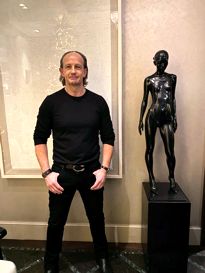
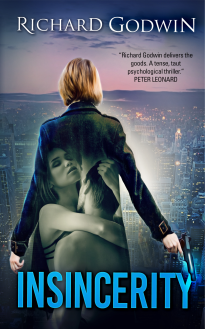
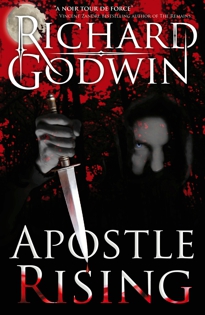
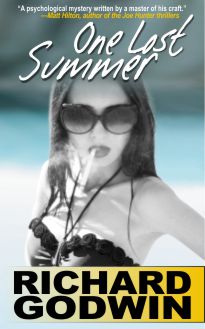
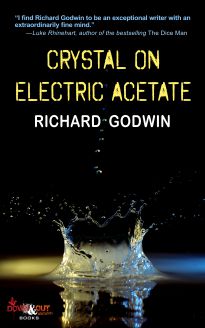
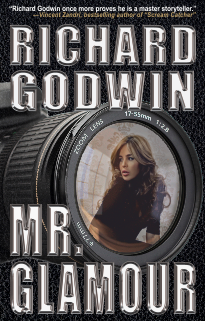
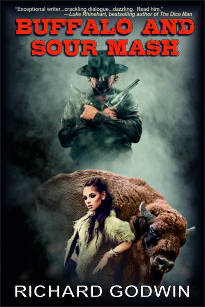
4 Responses to Chin Wag At The Slaughterhouse: Interview With Rachel Kendall